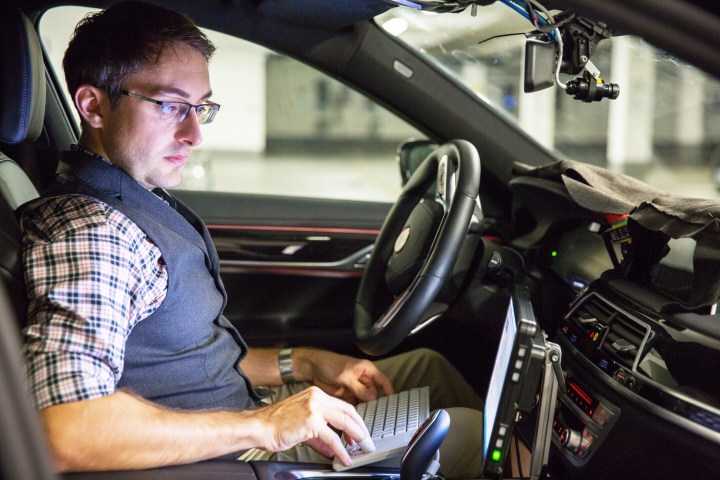
Researchers at the University of Southhampton ran simulation tests to measure human “takeover time” under two conditions. They measured how long it took drivers riding in the car but not otherwise engaged to take back control and the length of time when drivers were distracted by another activity — in the test simulation they were told to imagine they were reading an issue of National Geographic.
In the simulation test, subjects drove a Jaguar XJ 350 traveling at 70 mph for 18.6 miles in moderate traffic on a six-lane highway, with three lanes traveling in each direction with a separation barrier. The test group consisted of 26 participants (10 females and 16 males) ages 20 to 52 with a minimum of one-year and average of 10.6 years of driving experience. Switching between manual and automated mode required touching two buttons on a tablet located on the simulation vehicle center console. When the test required human takeover from the automated mode, an icon replaced the speed indicator on the instrument panel and a computer-generated voice stated, “Please resume control.”
In the first test mode, with drivers not distracted, the median takeover time was 4.56 seconds. The range of responses, however, was from 1.97 seconds to 25.75 seconds. So that means that for the subject with the slowest tested takeover time, the car going 70 mph would have traveled just over a half mile before the human regained control. At the median time of 4.56 seconds, the car would have traveled 468 feet, or a little more than one and a half football fields.
In the distracted mode, testing the range in response time wasn’t as great, from 3.17 to 20.99 seconds, with a median time of 6.06 seconds. So in the median takeover time, the car would have gone 622 feet, or more than two football fields, before human takeover. In the slowest response time, the car traveled about 2,155 feet.
It’s important to note that the test times didn’t measure driver response to whatever was going on, but just how long it took them to regain control. Then they had to assess the situation and take appropriate action. If you don’t find that a little scary, maybe think again.
The authors of the study note that while contemporary driver assistance features are commonly considered “automated,” they are more accurately “conditionally automated” and drivers should be fully aware of the misconception and know the difference. Once vehicles are fully autonomous, all passengers will just be able to ride, but until that time, driver takeover time will be a crucial factor.



